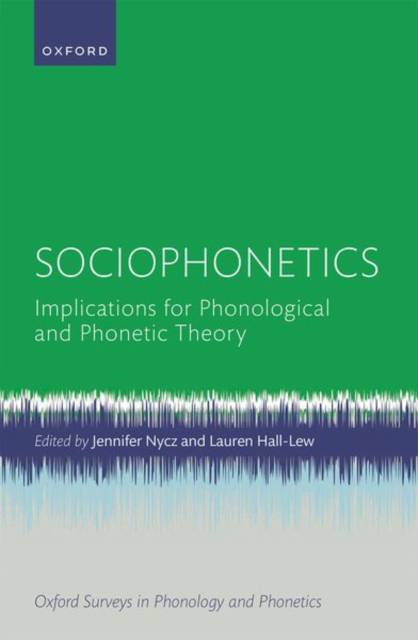
Je cadeautjes zeker op tijd in huis hebben voor de feestdagen? Kom langs in onze winkels en vind het perfecte geschenk!
- Afhalen na 1 uur in een winkel met voorraad
- Gratis thuislevering in België vanaf € 30
- Ruim aanbod met 7 miljoen producten
Je cadeautjes zeker op tijd in huis hebben voor de feestdagen? Kom langs in onze winkels en vind het perfecte geschenk!
- Afhalen na 1 uur in een winkel met voorraad
- Gratis thuislevering in België vanaf € 30
- Ruim aanbod met 7 miljoen producten
Zoeken
€ 133,95
+ 267 punten
Omschrijving
This book provides a critical overview of sociophonetic research and considers how the findings of this field illuminate and problematize a range of central issues in phonetics and phonology. The core argument of the volume is that research carried out under the aegis of sociophonetics is uniquely positioned to address core questions in phonetic and phonological theory; to raise new questions for research; to improve theories of how the sounds of language are represented, structured, produced, and perceived; and to discern the relationship between the linguistic system and the social context in which speech production and perception occur. The chapters address three key areas of impact for sociophonetic research - linguistic structure, the relationships between perception, production, and social representations, and language change - and outline further opportunities for interdisciplinary synergy. The book will appeal to researchers interested in questions surrounding phonological and phonetic representations and processes, and to scholars whose focus is the social patterning of phonetic variation; it also provides valuable suggestions for the design of future studies and the re-analysis of existing data.
Specificaties
Betrokkenen
- Auteur(s):
- Uitgeverij:
Inhoud
- Aantal bladzijden:
- 160
- Taal:
- Engels
- Reeks:
Eigenschappen
- Productcode (EAN):
- 9780198813798
- Verschijningsdatum:
- 20/04/2026
- Uitvoering:
- Hardcover
- Formaat:
- Genaaid
- Afmetingen:
- 171 mm x 246 mm

Alleen bij Standaard Boekhandel
+ 267 punten op je klantenkaart van Standaard Boekhandel
Beoordelingen
We publiceren alleen reviews die voldoen aan de voorwaarden voor reviews. Bekijk onze voorwaarden voor reviews.









